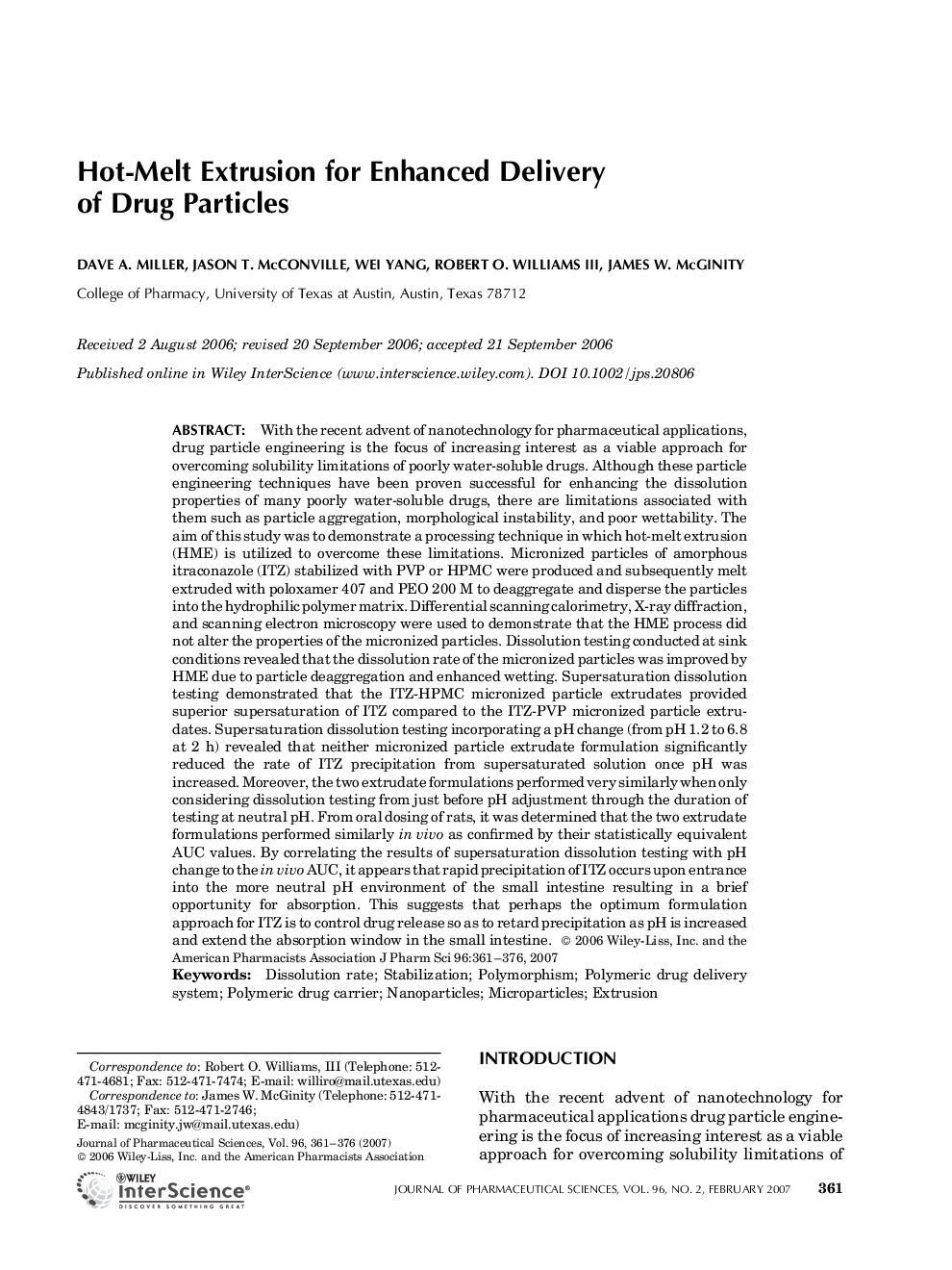| کد مقاله | کد نشریه | سال انتشار | مقاله انگلیسی | نسخه تمام متن |
|---|---|---|---|---|
| 2487042 | 1114401 | 2007 | 16 صفحه PDF | دانلود رایگان |
عنوان انگلیسی مقاله ISI
Hot-Melt Extrusion for Enhanced Delivery of Drug Particles
دانلود مقاله + سفارش ترجمه
دانلود مقاله ISI انگلیسی
رایگان برای ایرانیان
کلمات کلیدی
موضوعات مرتبط
علوم پزشکی و سلامت
داروسازی، سم شناسی و علوم دارویی
اکتشاف دارویی
پیش نمایش صفحه اول مقاله

چکیده انگلیسی
With the recent advent of nanotechnology for pharmaceutical applications, drug particle engineering is the focus of increasing interest as a viable approach for overcoming solubility limitations of poorly water-soluble drugs. Although these particle engineering techniques have been proven successful for enhancing the dissolution properties of many poorly water-soluble drugs, there are limitations associated with them such as particle aggregation, morphological instability, and poor wettability. The aim of this study was to demonstrate a processing technique in which hot-melt extrusion (HME) is utilized to overcome these limitations. Micronized particles of amorphous itraconazole (ITZ) stabilized with PVP or HPMC were produced and subsequently melt extruded with poloxamer 407 and PEO 200Â M to deaggregate and disperse the particles into the hydrophilic polymer matrix. Differential scanning calorimetry, X-ray diffraction, and scanning electron microscopy were used to demonstrate that the HME process did not alter the properties of the micronized particles. Dissolution testing conducted at sink conditions revealed that the dissolution rate of the micronized particles was improved by HME due to particle deaggregation and enhanced wetting. Supersaturation dissolution testing demonstrated that the ITZ-HPMC micronized particle extrudates provided superior supersaturation of ITZ compared to the ITZ-PVP micronized particle extrudates. Supersaturation dissolution testing incorporating a pH change (from pH 1.2 to 6.8 at 2 h) revealed that neither micronized particle extrudate formulation significantly reduced the rate of ITZ precipitation from supersaturated solution once pH was increased. Moreover, the two extrudate formulations performed very similarly when only considering dissolution testing from just before pH adjustment through the duration of testing at neutral pH. From oral dosing of rats, it was determined that the two extrudate formulations performed similarly in vivo as confirmed by their statistically equivalent AUC values. By correlating the results of supersaturation dissolution testing with pH change to the in vivo AUC, it appears that rapid precipitation of ITZ occurs upon entrance into the more neutral pH environment of the small intestine resulting in a brief opportunity for absorption. This suggests that perhaps the optimum formulation approach for ITZ is to control drug release so as to retard precipitation as pH is increased and extend the absorption window in the small intestine. ©2006 Wiley-Liss, Inc. and the American Pharmacists Association J Pharm Sci 96:361-376, 2007
ناشر
Database: Elsevier - ScienceDirect (ساینس دایرکت)
Journal: Journal of Pharmaceutical Sciences - Volume 96, Issue 2, February 2007, Pages 361-376
Journal: Journal of Pharmaceutical Sciences - Volume 96, Issue 2, February 2007, Pages 361-376
نویسندگان
Dave A. Miller, Jason T. McConville, Wei Yang, Robert O. III, James W. McGinity,